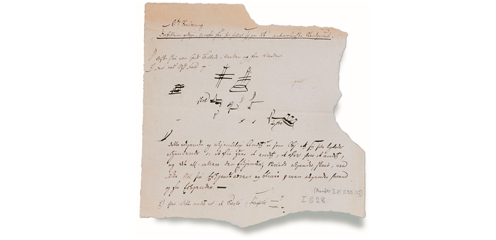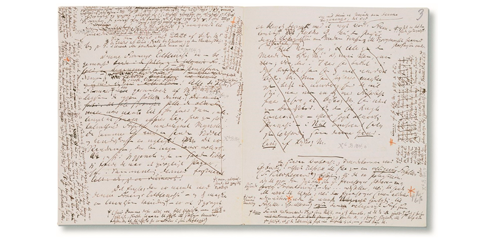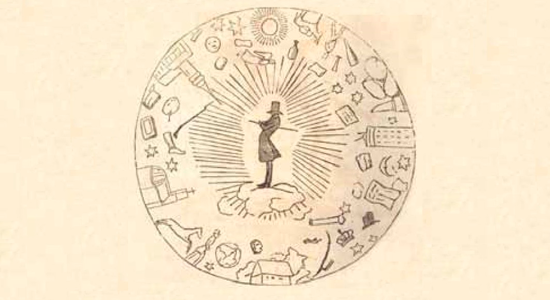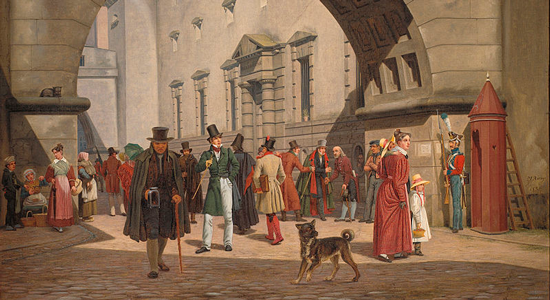Laugther's Martyr
The Ambiguity of Anxiety


and the Critique of Systematic Philosophy
The System and the Individual
Repetition and Fear and Trembling are formed as psychological dramatizations of the Old Testament stories of Job and Abraham, whose fates were shaped in the meeting with a majestic God beyond conceptualization. With these works, Kierkegaard began a direct and an indirect critique of the interpretation of existence that G.W.F. Hegel had formulated in his “system,” the hottest philosophical fashion in the Danish Golden Age.
"Most systematic philosophers have the same relation to their systems as a man who builds an enormous castle but lives beside it in a storage shed: they themselves don’t live in the enormous systematic structure." (Journalen JJ. Source: SKS.dk)
The critique continues in the works that follow, and culminates in the Concluding Unscientific Postscript, which satirically presents Hegel’s followers as eggheads who have forgotten the concrete existence of the individual human being, including their own existences.
"Existence must come to an end in the eternal before the system is completed. There can be no remnant left over, not the slightest dingle-dangle—such as the esteemed Professor writing the system." (Afsluttende uvidenskabelig Efterskrift. Kilde: SKS.dk)

Ambigious Anxiety
Long before modern psychology had entered puberty, Kierkegaard unfurled advanced psychological concepts that in many senses were Freudian before Freud was around. In his primary psychological work, The Concept of Anxiety, he presents his detailed analyses of the relationship of anxiety to phenomena such as freedom, sexuality, original sin, and history. He sketched the field of investigation in a journal entry in 1842:
"Anxiety is a desire for what one fears, a sympathetic antipathy. Anxiety is an alien power that seizes the individual, and yet he cannot tear himself free of it, nor does he want to, for he fears it, but what he fears is what he desires." (Journalen JJ. Kilde: SKS.dk)
As spirit, human beings are different from everything else in this world. The stone on a beach cannot be anxious, nor can a stork, nor a giraffe, even if they live dangerous lives. According to Kierkegaard, animals cannot be anxious, but they can experience fear, because fear is always directed at a concrete, definable object. Anxiety doesn’t arise out of the blue, however. A person is anxious about becoming him- or herself, he claims.
"If a human being were an animal or an angel, he wouldn’t feel anxiety. But because he is a synthesis, he can be anxious, and the more anxious he is, the greater he is." (Begrebet Angest. Kilde: SKS.dk)
According to Kierkegaard, anxiety isn’t just a negative phenomenon. It also reveals that human beings are spirit, but spirit in an unbalanced state. Related to anxiety is despair, the essence of which Kierkegaard treats in The Sickness unto Death. It includes a number of detailed diagnoses of the human desire not to want to be oneself, not to want to be the person one is constituted to be but anything else or perhaps not anything at all.
This is illustrated with an image of the human person as a house consisting of a cellar, a main floor, and an attic. Each individual is free to choose where to dwell, but most people choose to crawl around in the cellar, like a Dostoyevskian underground man, in order to enjoy a self-tormenting isolation from the world. Kierkegaard calls this desire to descend away from oneself “sin” and describes it with the formula: “Sin is, before God, in despair not want to be oneself, or, in despair, to want to be oneself.”


